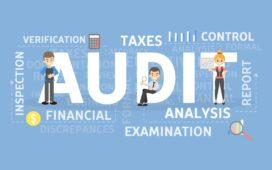While you can always refinance your loan to settle any debt, from medical bills to student loans, consolidating your credit card debts is the most cost-effective way. Credit card debts often have higher interest rates than other loan options, increasing the overall costs. By refinancing your credit card debts, you get to avoid costly and numerous monthly card repayments.
How to Choose the Best Credit Card Refinancing Option
Numerous debt consolidation lenders exist today and differ in their interest rates, loan repayment terms, fees, and even the amount you qualify to get. Here are the details you need to consider before choosing a loan refinancing option for your credit cards.
Loan Repayment Terms – While some loan terms can be as short as six months, others stretch into several years. If you prefer settling your loan sooner, look for a lender providing shorter repayment terms. But if you need lower monthly repayments, consider longer repayment terms.
Interest Rates – The best loan refinance option should offer the lowest interest rate, depending on your credit score. Your monthly repayments and overall loan interest will be lower if you have the highest credit score.
Fees – A better credit score can enable you to qualify for more loans with no origination fees or other additional fees. But still, assess every lender’s fees, including the lateness fee, to determine the ideal one.
Loan Amount – Inquire about the minimum and maximum amount you can borrow from different lenders and choose the one that meets your needs.
The Best Debt Consolidation Options for Credit Card Debts
You can consolidate your credit card debt through these five options:
Personal Loans – The loans are available through credit unions, banks, and online lenders. Most personal loans don’t require collateral and have lower interest rates, ranging from 3% to 30%.
Home Equity Loan or Home Equity Line of Credit (HELOC) – With this refinancing option, your property serves as collateral. You can borrow larger loan amounts with lower interest rates than credit cards and personal loans. They also offer long repayment terms.
Balance Transfer Credit Card – This debt consolidation option enables you to transfer various credit card balances into a single card. Its introductory period features zero interest on all consolidated balances. However, you must have a credit score of 680 or higher. The good thing about a balance transfer card is that it is easy to get and doesn’t require collateral.
Peer-to-Peer Loans – Numerous peer-to-peer lending platforms give you access to individual lenders for unsecured loans. Generally, the loan amounts range from $25,000-$50,000. Your credit history determines the terms, fees, rates, and borrowing limits.
Cash-out Refinance – A Cash-out refinance option enables you to borrow a new larger loan. Part of the money goes to repay your current mortgage, and you can use the remaining cash to consolidate credit card debts.
How to Refinance Your Credit Card Debt
1. Assess Your Existing Credit Card Debts and Interest Rates
You can start by generating a list of your credit cards, their interest rates, balances, and minimum monthly repayments. By doing this, you will know how much it will cost you to pay off credit cards and get vital information that will aid your loan refinancing process.
2. Find Balance Transfer Options at a Lower Rate
The rule of thumb for settling one loan with the other is that you should only move the loan balance to a credit card with a lower interest rate. It will enable you to save more money in the end. But if you transfer the refinance money to a credit card debt with higher interest, you will pay way more.
Again, look for a lender offering lower interest rates than your credit cards, as it will enable you to consolidate your debts cost-effectively.
3. Refinance Credit Card Debt with the Loan Proceeds
After receiving loan approval, you may get a lump cash deposit of the proceeds into your bank account or a check. Don’t spend the money on home improvements or other things, excluding credit card payoff. You will be rendering yourself into more debts that might be overwhelming to pay off in the future.
Immediately you get the funds, ensure you settle every credit card debt in full. You can send a check, use your bank’s online bill payment option, or pay through the credit card website. No matter how you do it, ensure you pay off the debts as soon as possible to avoid new interest charges.
4. Focus on Becoming Debt Free
Even if you have other loans, such as student and auto loans, paying off high-interest debt will quicken your journey to becoming debt-free. Focus on paying your new loan as scheduled without fail.
The good thing is that you only have to deal with one monthly loan repayment rather than several. Again, the interest costs are lower, reducing the overall monthly repayment costs.
If you make every payment on time within the life of the loan, you will have zero balance with no credit card debts to worry about. Once you settle your new loan, try to avoid entering into new debts in the near future.
Benefits of Refinancing Your Credit Card Debts
Here is how you can benefit from taking a loan to settle credit card debts:
- Reduce Interest Rates – Carrying a credit card balance can cost you about 12% to 20% or more annual percentage rate (APR), depending on your credit score and card type. Most personal loans have an interest rate that’s less than 10%, enabling you to have fewer monthly costs and clear your debt sooner.
- Boost Credit Score – Credit card refinancing raises your credit mix, contributing up to 10% of your score.
- Streamlined Payments – Through consolidation, you only have to deal with a single monthly loan repayment, which frees your time for other things.
- Pay Off the Credit Card Debt Sooner – Refinancing enables you to clear your debt sooner and avoid additional interest costs.
Drawbacks to Credit Card Refinancing
- May Lead to More Debts – Refinancing your credit card debt means borrowing more money. At the end of it, you will still have a bigger debt to settle.
- Low-Interest Rates Are not Always Guaranteed – If you have a bad credit score, your interest rates might be high or you may fail to qualify.
- Additional Fees – Some lenders charge numerous fees, including origination, late payment, and insufficient funds.
Don’t allow high-interest rates from credit card debts to weigh you down. Choose the most suitable debt consolidation option and start your debt-free journey. Always check the rates, terms, and fees before settling for a lender or refinancing option.









